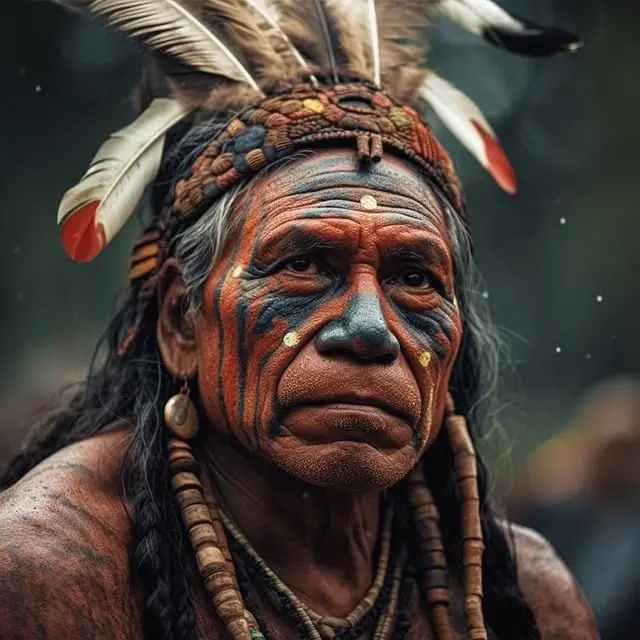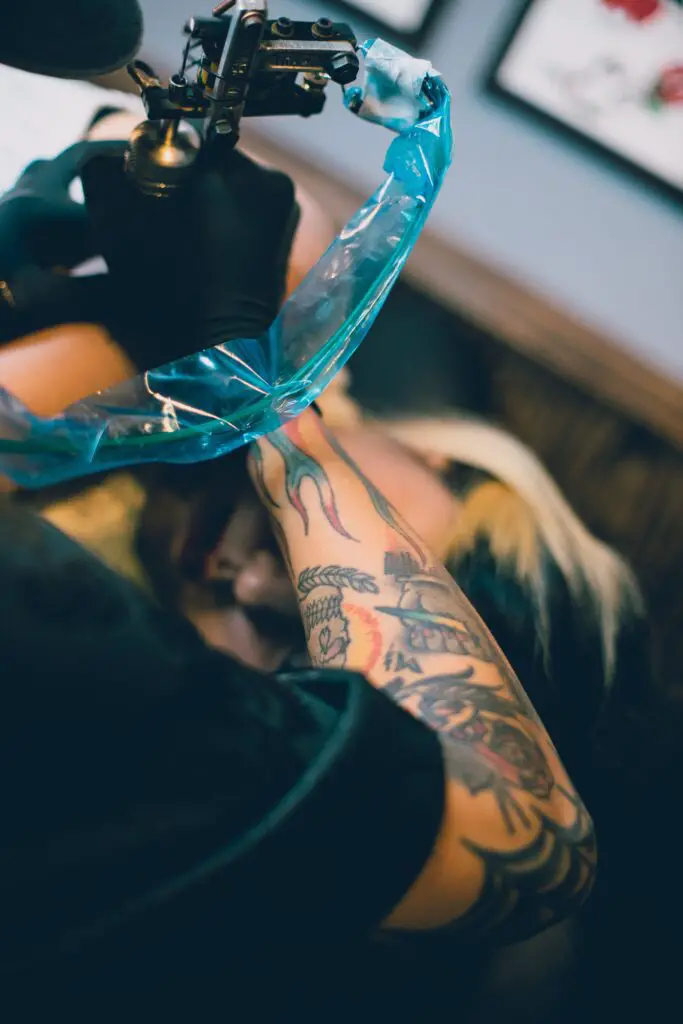Tattoos’ Origin and Meaning are an interesting pursuit to explore in a society where the Tattoo has been developed as an art and a profession. In exploring the history of tattoos, the Tattoo’s origin and Meaning can be coined as a term for practicing tattooing as a form of permanent body decoration. The pygmies of New Guinea used herbs to treat infections, leaving behind permanent scarring.
At the same time, the Apache and Comanche warriors of North America rubbed earth into battle wounds to make scarring more visible and flaunt them within the tribe. These practices are closer to modern tattoos.

Hence, tattooing most likely developed through bloodletting practices, scarification rituals, medical treatments, or accidents in various locations. It is incorrect to believe that tattooing originated in a single location.
Contents
Tattoos Origin and Meaning
Since tattooing has evolved as a custom, art or another practice with unique ideologies and beliefs, several views and studies have been conducted in this area. Hence, there is no common definition or purpose to tattoo origin and Meaning, but various views. David Livingstone reported that many Africans tattooed themselves by introducing a black substance under the skin to produce a raised scar in his book “Missionary Travels and Research in South Africa” (1857).

Karl von den Steinen, a German explorer and ethnologist, thought that South American tattooing originated from the practice of scarification. The scar was discolored because plant sap was applied to the wounds to stop bleeding. The resulting decoration may be a tattoo.
Early Tattoos

When talking about the Tattoo’s origin and Meaning, clay figurines with their faces painted or engraved to resemble tattoo marks are the earliest examples of tattoo art. The earliest examples of these figures have been discovered in tombs in Japan that date to at least 5000 BCE.
Did you know? (A fact from the historical evidence)
The oldest known human with tattoos still visible on his mummified skin is a Bronze-Age man who lived around 3300 BCE. “Otzi the Iceman” was discovered in a glacier of the Otztal Alps, close to the border between Austria and Italy, and he had 57 tattoos.
Numerous were situated on or close to acupuncture points corresponding to contemporary points that would be used to treat the signs of illnesses he seems to have experienced, including arthritis. According to some scientists, these tattoos represent an early form of acupuncture. Otzi’s tattoos appear to be made of soot, even though how they were created is unknown.
From the eighth to the sixth century BCE, tattooing was considered barbaric. The Persians taught the Greeks how to tattoo, and they used it to mark enslaved people and criminals to be recognized if they tried to flee. This custom was taken up by the Romans from the Greeks.
Tattoos’ Origin and Meaning in Different Cultures
The practice of tattooing may have spread from different locations due to migration and nomadic peoples: women from different gypsy tribes in India and the Middle East were skilled tattoo artists. For many years, they served as a source of tattoos for locals and travelers from far-off places like Eastern Europe. At the beginning of the Christian era, the Scythians also brought tattooing from Siberia to Eastern Europe.
When two people meet, they naturally swap traditions—whether out of comradeship, respect, jealousy, or curiosity. A good illustration is the mutual imitation of tattoos among South Sea Islanders and European sailors. Tattoo designs spread over vast areas due to the trade-in of prisoners kidnapped by rival tribes by their customs. When traveling to other tribes or islands, the men of Micronesia and Borneo gathered tattoos.
Similarities and Differences of Tattoos
Similarities between tattoo designs from different regions and cultures can be found, just as there are connections between languages and dialects spoken across vast distances. For instance, many men in Southeast Asia had tattoos called “trousers” that extended from the waist to the knees. Women tattooed similar designs on their chin and cheeks among the inhabitants of the Arctic and the west coast of America.

Tattoos Origin and Meaning Then and Today
At present, tattoos are more of fashion and art. However, the purpose of having tattoos in ancient times cannot be precisely mentioned due to the unavailability of evidence of purpose. Tattoos have historically and culturally served as both sources of shame (when used as a form of punishment) and marks of distinction (given as rewards for accomplishments or to mark the passage into adulthood). Tattooing has an unavoidable element of pain; for many people, the ability to endure it was essential to get started.
At a tribal level, tattoos can distinguish between friends and enemies outside the group and signify age, marital status, power, and class. In many tribes, women’s tattoos served as status symbols while guaranteeing they were worthless to neighboring tribes.
Conclusion – Tattoos’ Origin and Meaning
Many tattoos’ original meanings still need to be remembered. However, physical characteristics like scarification, tattoos, and body piercings have always been a clear way to identify people within a group and groups within a society. A tattoo plays a significant role in one’s identity.
Globally, native tattooing is all but extinct, but in recent years, tattoos have somewhat experienced a renaissance in Europe and North America. Although the reasons for this are not entirely clear, it is clear that tattooing in the ancient world shares many similarities with tattooing in the modern era.
READ MORE




